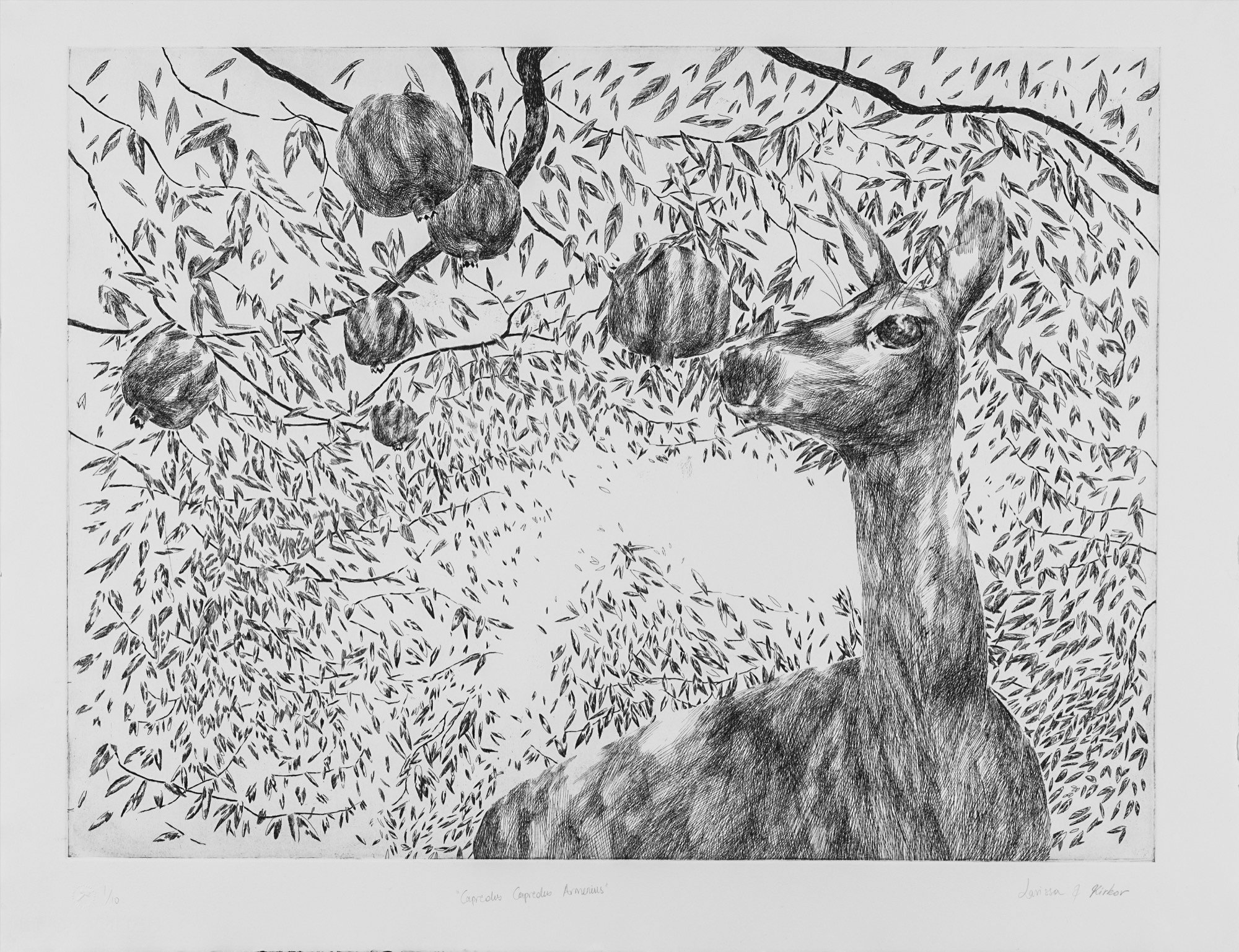Capreolus Capreolus Armenius Etching Print 2023
In Hoc Signo Vinces (2024)
In Hoc Signo Vinces
in this sign thou shalt conquer
ἐν τούτῳ νίκα
bu işaretle fethedeceksin
From the final years of the Ottoman Empire to the establishment of the Republic of Turkey (1840-1923), many colonialist and imperialist scientists and missionaries came to the Ottoman territories of the time to research the region's geography, nature, and socio-political structure. Many of these researchers made significant discoveries by studying species that had not previously been recorded in Western scientific literature, particularly in Anatolia and Mesopotamia. Among these discoveries were species belonging to the animal class with Latin names such as Vulpes Vulpes Kurdistanica (Satunin, 1906), Ovis Armeniana (Blyth, 1840), and Capreolus Capreolus Armenius (Blackler, 1919).
In 2005, the Ministry of Environment and Forestry of the Republic of Turkey removed the words 'Armenia(n)' and 'Kurdistan' from the taxonomic names of these three endangered animal species and replaced them with 'Anatolian' and 'Eastern'. These names were changed from Vulpes Vulpes Kurdistanica to Vulpes Vulpes, from Ovis Armeniana to Ovis Orientalis Anatolicus, and from Capreolus Capreolus Armenius to Capreolus Cuprelus Capreolus. In a statement published by the Ministry on March 4, 2005, it was declared that the original names were "divisive and contrary to Turkish unity."
In her work titled "In Hoc Signo Vinces," Larissa Araz examines this event in four separate sections: Scientist, Language, Animals, and Hunters. In the Scientist section, the audience is greeted with wall paintings and zinc plates hung on them. These charcoal-drawn wall paintings depict the sketches and records made during the period of exploration, emphasizing the transience of those records, while the patterns on the zinc plates depict the role of contemporary technologies in the creation, distribution, and control of knowledge.
In the Hunters section, visitors are invited inside through a video of a fire creeping through a door gap. Images of hunters placed around the fire question the visual representations of hunting and prey.
In the Language section, there is a cabinet inspired by the display formats in natural history museums. A tree, compressed inside as if squeezed in, is placed within it; developed inspired by the drawing "The Tree of Life" by zoologist, philosopher, painter, and explorer Ernst Haeckel.The tree symbol used to define the families and origins of species has evolved into an image also used to separate races and families over time.
Roe, wild sheep, and foxes walking along the corridor make up the Animals section. These animals, walking with ghostly transparency, engage in a dialogue with the viewer about their relationship with the region they belong to.




















